When planning your group dance there are a number of formations you can use to organize your fellow dancers to maximize the space you have. Below we’ve outlined a number for formations which can be used for individual dancers or partner pairs which are commonly used in wedding performances. Each tutorial overview comes with recommended formations and information about how to transition into/out of the song.
Some important things to keep in mind:
- Your audience may not be the entire party, rather the wedding couple or a specific individual being celebrated. Have your group face the person/couple as the front of the performance area and have them be the “center” or middle of the stage.
- If there is audience seating on three sides of the dance floor, set your formations further back for best visibility and have fun looking out at everyone while you dance!
- If you are doing a medley, you can use transition music to have people join in, leave, or travel to create new formations for each song.
V-Shaped
Create a V-shaped formation with the middle person/couple either closest to the front or the furthest back.
This formation is ideal when:
- One/a few dancers have mastered the choreography and others feel more confident following along.
- One/a few dancers should be showcased (ie siblings/parents/close friends of the wedding couple).
- Moving into this formation from staggered lines or a diagonal.
- Moving out of this formation into staggered lines, a diagonal, or random positions.

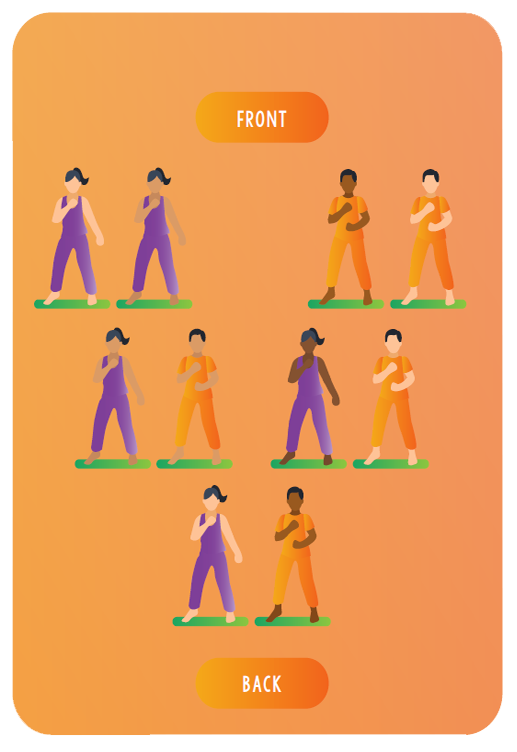
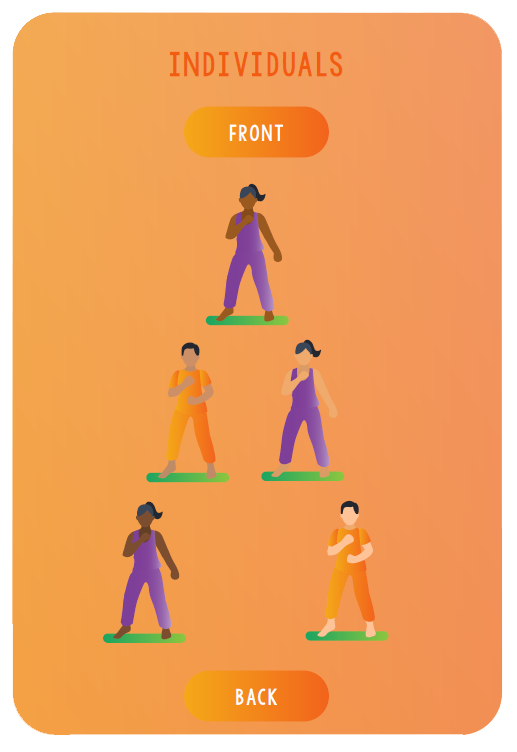
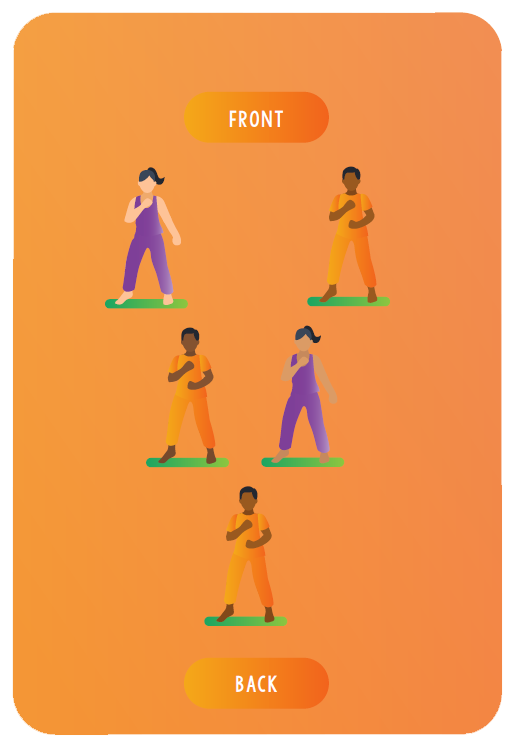
Staggered
Dancers can position individually or pair up as couples in a staggered formation so that everyone is visible. The middle person/couple should be aligned directly at center stage. If there are an even number of individual dancers or couples, then the middle two sets should be on either lateral side of center.
This formation is ideal when:
- Confident dancers can lead up front and the rest of the group can be guided in the back row.
- Some people are transitioning on/off stage and some people are remaining (the former can be in the side positions).
- Parts of the choreography call for groups to alternate steps/take turns dancing; groups can be separated into front & back or left & right.

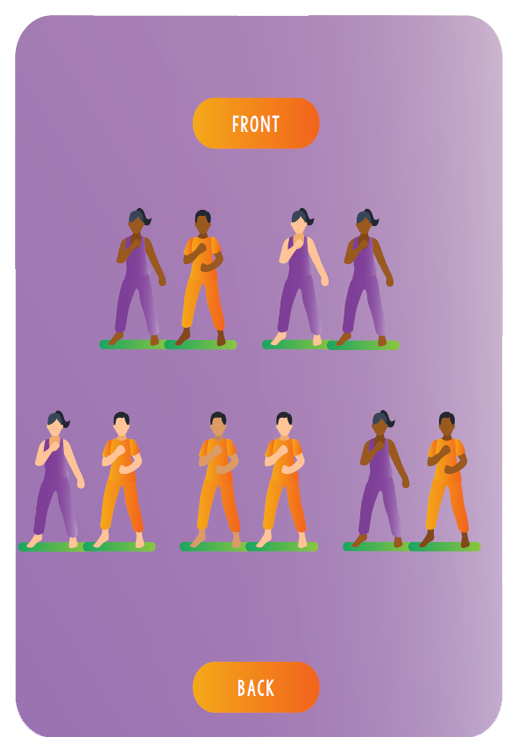

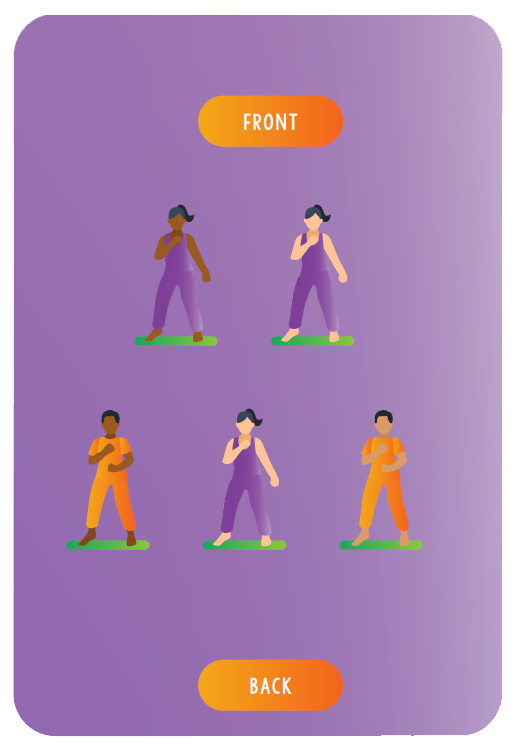
Diagonal Line
Individuals/couples form a diagonal line so that each person is off the shoulder of the dancer in front of them. The middle person/couple should be at the midpoint of the performance area. If there are an even number of “rows” then the two middle individual dancers or couples should be on either lateral side of center, with one dancer/couple slightly in front of the midpoint, and the other slightly behind.
This formation is ideal when:
- Everyone in the group is pretty confident; people that would like to follow along can be in the back positions.
- Moving into/out of a V formation or staggered line.
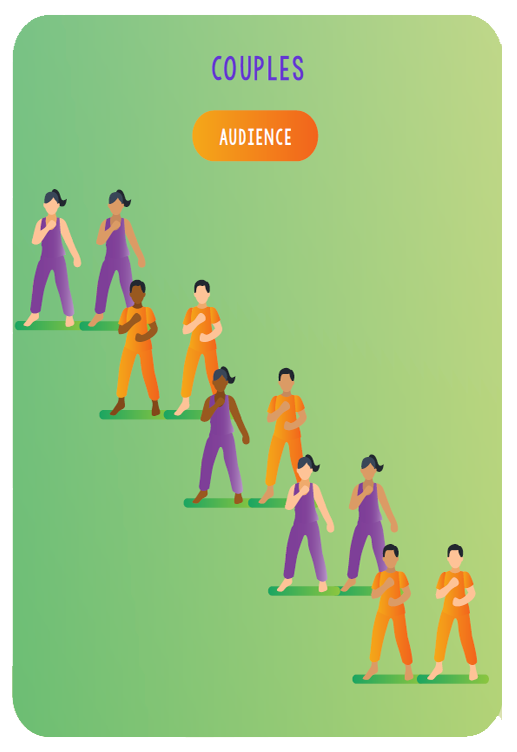

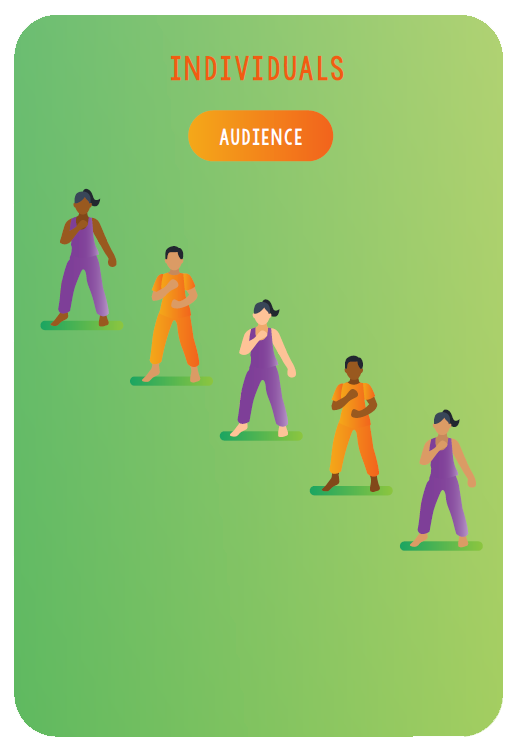
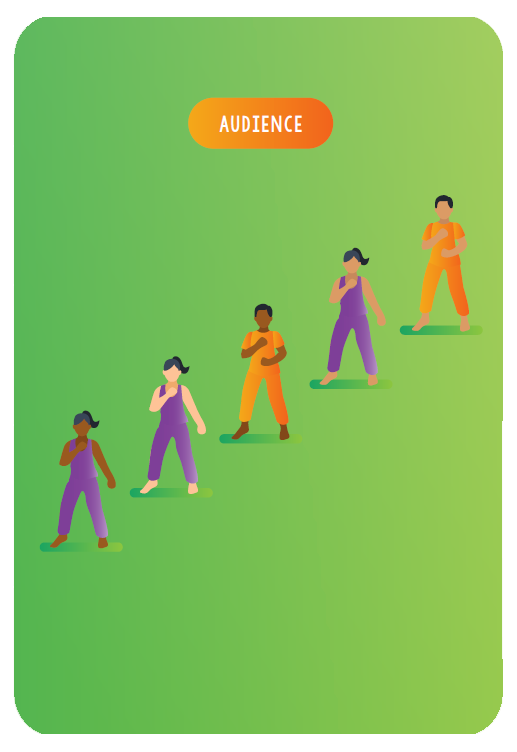
Random/Clump
If people are coming in and out of a medley, formations can be randomly spaced out to evenly cover the stage and ensure everyone is seen from the audience. You can also create a tight group or horizontal line with dancers. When practicing, make sure to establish which dancer/couple is “center” so that all other dancers can determine their positions based off of them.
This formation is ideal when:
- Many dancers are entering/exiting the performance at various times
- Some dancers feel more comfortable amidst a group of people, with a little less spotlight on them 🙂
- The song calls for a more casual feel, a flash mob style dance, or a big friend/family finale with everyone dancing together!


